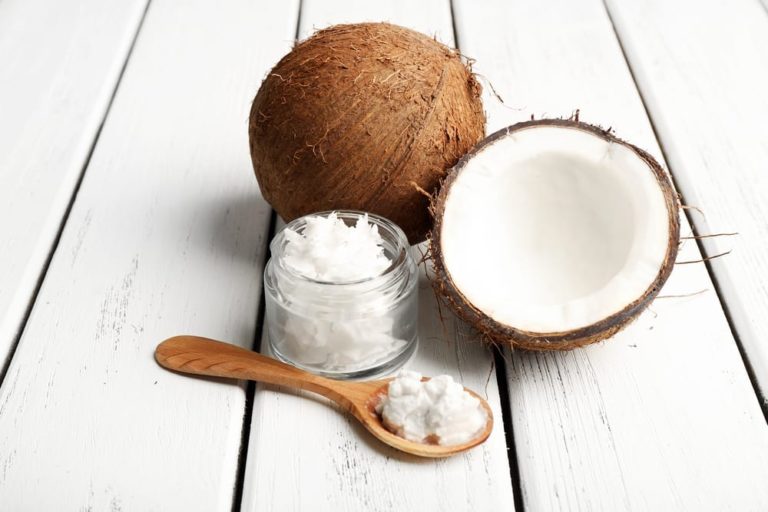The monthly suffering of many women: Pain, discomfort, the desire for hot water bottle, bed, baggy sweater and rest. Pretty annoying. Would be much nicer not to be more or less restricted for a few days every few weeks because of these period symptoms. Or is it? Or maybe we even need to worry if we don’t get our period for a long period of time?
Many women – simply put – do not get their period (anymore). You suffer from a so-called “
Amenorrhea
“. However, it is by no means a relief – on the contrary. Not having a functioning cycle can be a health burden for women. It should not be ignored in any case, because it is a signal from the body that something is not going as it should. And often, even though everything seems super healthy on the outside.
No menstruation? The absence of the period is also called amenorrhea.
In the following article we would like to explain possible causes of such amenorrhea. We will focus more on how certain life style factors can throw female hormones out of balance. Other causes, complications and treatment options will also be explained to give you a good overview of this sensitive topic. One thing is very close to our hearts. If you no longer get your period yourself, please contact a doctor you trust. It is important that the causes are clarified in order to achieve an adapted treatment and to avoid long-term consequences.
You also want to #lose weight successfully and deliciously?
1. what are the forms of amenorrhea?
A distinction is made between primary and secondary amenorrhea. The primary form describes the absence of menstruation until the age of 16. Secondary amenorrhea is when there is no menstruation for a period of three or more months. In this form, the affected women – in comparison to primary amenorrhea – have already had their menstrual period beforehand.
2. what are the causes of the absence of menstruation?
The causes of amenorrhea are very diverse. Quite natural reasons for the absence of periods are pregnancy, breastfeeding or menopause. In this article, however, we would like to focus primarily on the causes of a special form of secondary amenorrhea: Hypothalamic amenorrhea.
The so-called “hypothalamic amenorrhea” is one of the most frequent causes of the secondary form, accounting for 20-35%. It sounds – admittedly – a bit like technical jargon at first glance. But don’t worry. We will explain it to you in detail below.
This form of amenorrhea describes an interaction between certain lifestyle factors and female hormones. This is controlled by a specific region in the brain – the hypothalamus. But before we explain this complex relationship on a biochemical level, we would like to describe what can affect our brain so much that afterwards the whole female cycle goes crazy.
The following factors, which we often influence ourselves through a certain lifestyle, are directly related to the absence of periods:
- Energy deficits: low body weight, large weight loss, very low energy intake, low-fat diets, low body fat percentage, excessive exercise without compensating increase in energy intake.
- Stress
There are clear associations between the occurrence of hypothalamic amenorrhea and a lifestyle characterized by inadequate energy intake . This includes very low body weight, large weight loss, very low caloric intake overall, low-fat diets, low body fat percentage, and excessive exercise. These things often occur simultaneously in many women. However, the interactions are complex and the bottom line, according to current knowledge, is mostly the sum of the available energy. For example, the risk cannot be reduced to pronounced sports units only. In other words: Neither does a woman who does intensive sports necessarily suffer from amenorrhea, nor is the one who prefers her sofa to the gym saved from it. If the body is not provided with enough energy, this can be a signal to stop the cycle.
Low-fat diets are often cited as a risk factor for amenorrhea. Why?
Total fat intake has been shown to be directly related to the female cycle. The exact mechanisms why fat intake is so crucial in this process have not yet been fully elucidated. However, the following aspects could play a role:
One explanation for the relationship between low-fat diets and period absence is total energy intake. This form of diets is often found among pronounced fitness lovers and is – in addition to the very low fat intake – often characterized by extremely high fiber intake. These quantities fill the stomach due to the large volume, but provide relatively little energy. If no other energy supply is offered to the body at the same time, a calorie deficit can occur as a result. As we already know, such a deficit can be a signal for the body to stop the cycle.
In some diets of the bodybuilder and fitness scene the following two risk factors meet at the same time: very low fat intake and very low body fat percentage. Since these low-fat diets often also include high amounts of protein, in extreme cases this can even lead to “protein poisoning” or the so-called “rabbit starvation”. These words describe a form of malnutrition triggered by an excessive protein intake combined with a caloric deficit caused by a low fat intake. (So the term “rabbit hunger” comes from a kind of starvation state from eating lean meat, such as the rabbit has).
In addition to the sum of fats ingested, certain fats also seem to have a positive effect on the female cycle. Thus, polyunsaturated fatty acids have an influence on steroid hormones, which include the female sex hormones. If the intake of polyunsaturated fatty acids is too low, this can mean lower levels of sex hormones as a consequence.
Another factor to consider regarding low-fat diets is that all of our cells rely on fats. Our cell membranes use them as building blocks. If the fat intake is extremely low, organs that are important for reproduction could also be negatively affected. Cycle disturbances would be the result.
Sports and Amenorrhea - The Athletic Triad
There are many studies that look at the relationship between hypothalamic amenorrhea and exercise. However, this is not about a few leisurely runs around the lake, but rather about daily, very intensive sports sessions. If extreme athletic stress is not compensated for by an adapted, increased energy intake, a lack of menstruation can be the result. The body is thus also led into an energy deficit. Maybe you’ve heard of the “female athlete triad” or the “athletic triad”? This term refers to the interaction of a lot of exercise, the absence of menstruation and osteoporosis (more on this later). These three points are widespread among competitive women athletes, especially in sports that require a low body weight (ballet, marathon, …). They show how strong the link between intense exercise and the female cycle can be.
Stress with the boss, stress with the best friends, stress with the boyfriend. And then also the running club, the foreign language course. The car needs to go to the garage and the preventive dentist appointment is also due. Too little time for too much to do. Psychological stress – whether at work or at home – can mess up your cycle. Every body reacts differently, but often emotional stress has a great influence on the hormone balance and can also lead to a lack of menstruation.
Why do periods stop when there are energy deficits and stress?
We now know that insufficient energy intake and/or stress can greatly affect the female cycle. But why does the body react in this way? Why can the period fail “only” because one perhaps takes in too little energy?
The body seems to protect itself. A possible pregnancy (which requires a functioning cycle) costs a lot of energy. Mechanisms controlling energy balance are therefore directly related to fertility. If you have a lot – and even too few calories to feed is a kind of stress for the body – your stress hormones rise. This in turn causes your sex hormones to drop, your cycle to stop. This connection ensures that pregnancy only exists if there is sufficient supply for the child. The absence of the period, as a sign of a disturbed cycle, is therefore a kind of precaution.
Leptin provides information about energy and nutritional status
A decisive factor when it comes to regulating the energy balance in the body is the so-called leptin. It is a messenger substance (hormone) that correlates with the fat mass of our body. The more body fat you have, the more leptin you have. Since fat is the number one source of energy, leptin therefore provides information about the body’s energy and nutritional status. Fittingly, women with hypothalamic amenorrhea have been shown to have lower leptin levels than women of the same age with functioning menstrual cycles. In this context, one also often reads that a low body fat percentage is associated with amenorrhea. Leptin provides the explanation.
The exact mechanisms of how sport, stress, malnutrition or the like affect the female cycle in detail are not yet fully understood. Do all factors have the same influence? The interplay is complex and requires much further investigation to make a generally valid statement.
Even more knowledge for science nerds and smarties
The connection between secondary amenorrhea and our brain
Are you interested in how exactly our brain is involved in all of this?
In our brain there is a region – the hypothalamus – which is responsible for releasing a neurotransmitter that affects the female cycle through further steps. This messenger substance (GnRH, gonadotropin-releasing hormone) stimulates the pituitary gland to release the hormones LH (luteinizing hormone) and FSH (follicle-stimulating hormone). Among other things, these cause the formation of estrogen in the ovaries. This is referred to as the “hypothalamic-pituitary-ovarian axis.”
In hypothalamic amenorrhea, factors mentioned such as stress, excessive exercise, or low energy intake may result in less (or no) GnRH being released. As a result, hormones essential for the female cycle are also lower. Estrogen, which is one of them, leads to a disturbance of the female cycle if the level is too low. The period remains absent.
Let us summarize the main points of this long section on hypothalamic amenorrhea:
Short and sweet: Hypothalamic amenorrhea
- It is one of the main causes of secondary amenorrhea.
- Energy deficits from too much exercise, low-fat diets, a low body fat percentage, too little energy intake, major weight loss, and stress are considered major risk factors.
- There is a direct relationship between energy balance and fertility. If there is not enough energy for a possible pregnancy, the cycle is stopped.
- The connection is controlled by the hypothalamic-pituitary-ovarian axis.
3. other causes of secondary amenorrhea
Secondary amenorrhea may not only result from certain life circumstances. Other causes may include:
- Polycystic ovary syndrome (PCOS). Accounting for 10% of women of childbearing potential, it is one of the most common hormonal dysfunctions and, along with hypothalamic amenorrhea, represents a major cause.
- Thyroid problems (hyper-/hypothyroidism)
- early menopause
- Pituitary tumors
- Medication (e.g. antidepressants)
- Contraception (some IUDs or pills). Widely used in connection with the contraceptive pill is also the term “post-pill amenorrhea”. This describes the frequent absence of a menstrual period in the first few months after discontinuation of the contraceptive pill.
4. causes of primary amenorrhea
Primary amenorrhea often has physical causes. These include congenital defects of the chromosomes or hormonal changes. However, any cause of secondary expression may also be the reason why a period has not yet occurred by the age of 16.
5. complications and consequences
Although you may be happy at first if your period is absent for a long period of time, unfortunately, depending on its form and cause, it can have far-reaching complications. Not only acne, headaches, hair loss, digestive problems or exhaustion can occur. Spontaneous pregnancy due to the disturbed cycle is also usually ruled out. Even our bones can suffer the consequences of amenorrhea. Remember the athletic triad we mentioned above? It describes the co-occurrence of amenorrhea, excessive exercise, and osteoporosis, often found in competitive female athletes. So there is a connection between the absence of periods and the occurrence of osteoporosis – a disease in which the bones become porous and thus prone to fractures. The reason for this link can be explained relatively simply: In addition to genetic factors, both hormones and nutrition determine how “strong” our bones become. Estrogen, among others, is considered to be an important influence on the development of good bone substance. For example, as we already know, estrogen levels are very low in hypothalamic amenorrhea, which may explain the association with poorer bone structure.
The absence of the period can therefore cause far-reaching health problems and should therefore in any case not be ignored!
We would like to emphasize once again that any form of amenorrhea must definitely be clarified with a specialist. Even though there are factors that you can influence yourself, you should definitely have all medical aspects that could influence the disturbed cycle checked and in no case treat them on your own.
Treatment always depends on what the causes are. Administration of hormones or medications may help in some cases. If life-style factors are responsible for the cycle problems, it may make sense to avoid “extremes.” A sports break. Sufficient energy in the form of food. Relaxation. A balanced lifestyle can restore your delicate hormone balance. In any case, you need to listen to your body and you should definitely not ignore the warning that something is not working as it should. Talk to a doctor and get checked out.
Always stay up to date with our Newsletter.
Literature
Golden NH, Carlson JL, 2008. The Pathophysiology of Amenorrhea in the Adolescent. Ann. N.Y. Acad. Sci. 1135: 163-178.
Meczakalski B, Katulski K, Czyzyc A, Podfigurna-Stopa A, Maciejwska-Jeska M; 2014. Functional hypothalamic amenorrhea and its influence on women’s health. J Endocrinol Invest, 37:1049-1056.
Meczekalski B, Podfigurna-Stopa A, Genazzani AR, 2010 Hypoestrogenism in young women and its influence on bone mass density. Gynecol Endocrinol 26:652-657.
Meczekalski B, Podfigurna-Stopa A, Warenik- Szymankiewicz A, Riccardo Genazzani A, 2008. Functional hypothalamic amenorrhea: Current view on neuroendocrine aberrations, Gynecological Endocrinology, 24:1, 4-11.
Melin A, Tornberg, AB, Skouby S, Møller S, Faber J, Sundgot-Borgen J, Sjödin A, 2015. Low-energy density and high fiber intake are dietary concerns in female endurance athletes. Scand J Med Sci Sports: 26: 1060-1071.
Mumford SL, Chavarro JE, Zhang C, Perkins NJ, Sjaarda LA, Pollack AZ, Schliep KC, Michels KA, Zarek SM, Plowden TC, Radin RG, Messer LC, Frankel RA, Wactawski-Wende J, 2016. Dietary fat intake and reproductive hormone concentrations and ovulation in regularly menstruating women. Am J Clin Nutr, 103(3):868-77.
Wathes DC, Abayasekara DR, Aitken RJ, 2007. polyunsaturated fatty acids in male and female reproduction. Biology of Reproduction: 77, 190-201.
Photo: shutterstock.com / Maksim Toome










